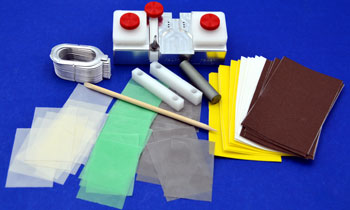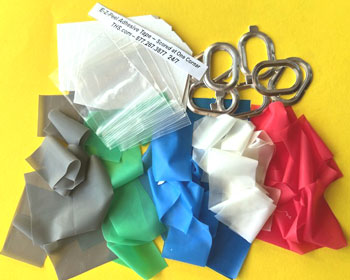Emerged
during the 18th century...
Scrimshaw as we know it
today, evolved from whaling during the golden age of the 18th century and is
generally acknowledged as the only original American artform.
When
whalers hunted for the Sperm whale for oil, they also found value in the abundance
of ivory teeth that remained. Equipped with idle time on board ship, a jack
knife, sharpened nail or canvas needle they scratched a design on the polished
surface of the whales' ivory teeth. Rubbing their design with lamp
black, squid ink (sepia) or India ink, they then wiped the excess ink
clean. Only the scratchings retained the ink creating great contrast against
the white polished ivory and a new artform emerged.
To no
ones surprise, the most common design included ships, whaling scenes and the
girl at home.
18th
Century Trading... Alaska and the Eskimos
When the American whaling fleet
entered the Bering Sea off the coast of Alaska in the late 1800's, the whalers
traded their whale ivory with the Eskimos walrus ivory. Many a sailor came home with
ivory walrus tusks and carvings.
For
centuries, the Eskimos had etched (scrimshawed) decorative designs on their
ivory and bone implements. Mostly geometric patterns but also animals, hunting
records and memorable exploits portrayed in primitive stick figure or pictograph style.
With the arrival of the American whalers, the Eskimos began to scrimshaw in a
more realistic style and they continue their ancient art tradition in this style to this
day.
Ancient
ivory...
Also from Alaska comes the ancient
ivory from the long extinct woolly mammoth and mastadon. At least 12,000 years
old, this ivory is imbued with rich brown tones but occasionally, a blue or
green color appears due to the absorption of minerals by the ivory over the centuries of
burial. This kind of ivory is referred to as fossilized, but it is actually in
the early stages of mineralization.
Ancient walrus ivory
also aquires these colors as it has lain buried and preserved in the frozen
tundra soil for centuries. It is often found in the form of Eskimos' tools such
as ax heads, mauls, sled runners and fishing net weights.
And today...
From these crude beginnings,
scrimshaw methods have become varied, ranging from traditional to ultra modern and
evolved into a finer artform.
Today, colored
inks are used on man-made materials, the etchings scratched by electric tools and
magnifiers used to produce photographic quality work.
And even though
scrimshaw can be patterned on a computer in mass quantities, the traditional
scrimshaw on ivory is unique as any other artform. Expressed on a rare and
inherently beautiful "canvas" that is itself appreciating in value! |












